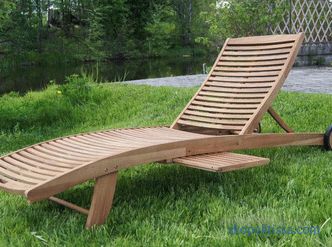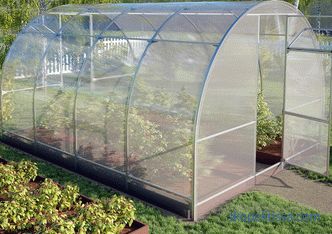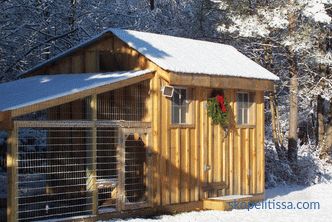Landscaping of the backyard territory starts to be engaged immediately after the house and outbuildings are built on the suburban plot. And here it is necessary to decide what to cover the paths and platforms - which material is better to use for this. The options offered by the modern building materials market are actually many, and there are plenty to choose from. In this article we will talk about the tracks of sandstone: what are the characteristics of this material, the pros and cons, the technology of laying.
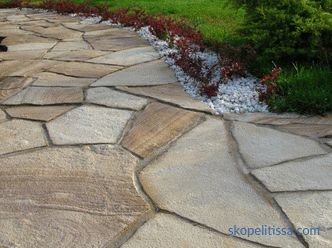
What is sandstone, its features
First of all, it is natural stone from the category of clastic sedimentary rocks. This material got its name because it consists of quartz grains 0.05 mm in size (i.e. sand), which are interconnected by natural mineral substance like cement. In nature sandstone is monolithic and layered. The best option for tracks and playgrounds - the second. That is, the process of its transformation into plates is simple and low-cost.
At the same time, producers do not try to give sandstone, as a finished product, a special evenness. That is, the tiles are not cut from it. Chipped plates of different thickness (10-60 mm) with jagged edges, with chips and cracks on the surface go on sale more often. But landscape designers use this stone to finish tracks and grounds very often, because it has:
-
a unique structure that absorbs very little moisture, water absorption is 0, 6-1,6%;
-
natural color ;
-
defined degree of roughness surface plates, which is important in rainy weather;
-
aesthetically attractive appearance .
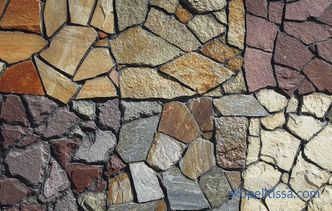
As for the appearance, the sandstone on the market is represented by different color design that nature gave him. These are usually light brown plates, but white stone, blue, red, green, burgundy and ashy can be found on the market. Finishing material from one manufacturer is represented on the market by one color shade. Rarely when there are multicolored stones in one batch. The photo below shows a traditional sandstone stone for terracotta-red tracks.
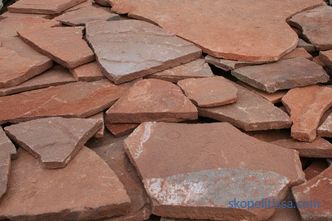
And other characteristics of this stone for information:
-
density varies in the range of 2250-2670 kg / m³, it depends on what cement substance is in the composition of the rock: siliceous, carbonate or clay;
-
porosity material 0.7%;
-
fire resistance is up to + 1700С, this indicator does not matter for garden paths, but this stone is used for decoration both indoors and outdoors for facades.
On our site you can familiarize yourself with the most popular sites in the Moscow Region for the construction of a country house . In filters you can set the desired direction, the presence of gas, water, electricity and other communications.
How to lay sandstone on garden paths
The technology of laying sandstone on paths is not much different from the same process if using paving slabs or any other stone. To do this, first of all, they carry out planning, that is, they determine where the path will be laid, what are its dimensions and configuration.
Then these parameters are transferred to the ground. Usually, alleyka borders are formed with the aid of chalky dressing or with the help of twine and pegs driven into the ground. It is very important to transfer the dimensions correctly, especially for the width of the path.
If the path will be subjected to significant loads
Typically, these paths lead from the entrance gate to the house, and they are used to drive cars. That is, the load is actually large. What they do in this case:
-
on the laid geotextiles with a thickness of 10 cm the river sand is poured, which must be leveled and tamped; 1> from above stack crushed stone in the same layer with alignment;
-
then install metal mesh , which will act as a reinforcement cage;
-
over the stacked materials pour the concrete solution with a thickness of 60 mm.
In this condition, the prepared track must stand for at least two days.Then you can proceed to the laying of sandstone.

If the tracks are subjected to light loads
This is a more simple and low-cost option for forming a tile cushion:
-
they dig a trench with a depth of 15-20 cm;
-
they are covered with geotextiles , or do not do it at all;
-
sand is covered with a thickness of 5 cm;
-
crushed stone - 5 cm.
If geotextiles are not used, then a waterproofing membrane is placed between the sand and crushed stone layer Well, black.
It might be interesting! In the article on the following link read about 81> brick tracks .
Laying sandstone
So, the cushion is ready, you can proceed to the main stage of the formation of garden paths from sandstone. It should be noted one fact that the stone paths can be constructed, embedding the stone tiles in the ground, that is, that the stone coating does not protrude beyond the soil. And the second option is when a path is constructed above the soil surface. In this case, the width of the alley increases, because its borders are formed by borders. That is, on the prepared cushion along the edges of the walkway, curbs are placed on the cement composition.
Otherwise, the technology of assembling the stone is no different. And this process consists in the following:
-
Elements of limestone are laid on the surface of the prepared path so that it fills the entire area to be veneered. First, large plates are laid, then small ones between them. The main task of the manufacturer, as closely as possible to lay the stone finishing material to each other. The smaller the gaps and gaps between the plates, the better.
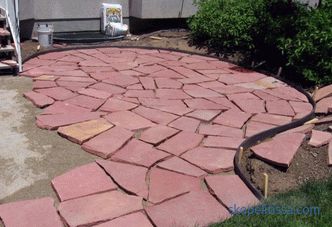
-
The thickness of stone slabs will surely be different. Therefore, when laying out the material, it is necessary to try so that their upper planes are located on the same horizontal level. Therefore, all the tiles among themselves are checked by level and leveled with a rubber mallet. Some craftsmen stretch the string over the horizon, and flagstone is laid over it.
-
A cement-sand mortar is prepared with an ingredient ratio of 1: 3. It is necessary in order to bond the stone tiles with the base, that is, a pillow. They do it this way: they take out two or three stone elements of the cladding, spread the prepared bonding mortar of the same thickness under them, and put the stone back into place, leveling it with a mallet. And thus fill the entire track.
-
In the process of laying tiles on cement mortar, between them filling the gaps with the same cement-sand composition is carried out. This is done for maximum bonding of cladding elements into one monolithic structure. It is important - you should try to do everything so that as little as possible to stain the surface of the finishing material. The cement composition quickly "eats" into the stone structure, leaving dirty stains and stains on it.
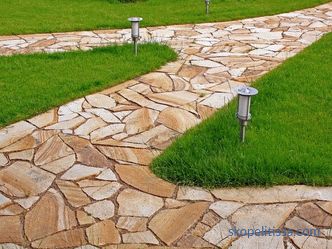
Some masters do not think about last warning. They simply fill the entire surface of the trimmed path with mortar, thus filling the gaps between the stone cladding elements. Finishing takes a dirty look, after which a lot of effort is applied to clean it. For example, use water or a grinder with a grinding wheel. That is, the process is not simplified, but complicated. Therefore, it is better to act carefully at this stage.
The video shows how the master covered the walkway on a suburban area with sandstone:
That might be interesting! In the article on the following link read about technology of building a step-by-step track, its decorative filling .
Useful tips
First of all, you need to indicate that the natural stone should be acquired in thickness depending on which track it will be used for. Because the thicker the tile, the more expensive it is. And if it just gets off the garden path, then it makes no sense to buy a thicker, more expensive, option. Thick facing elements get for automobile journey and platforms where the car will stand.
Sandstone itself - the material is quite dense and durable, but it can easily be trimmed with a grinder and a cutting disc. Some craftsmen simply split it with a hammer. After all, to cover the paths are not necessarily smooth edges.
As mentioned above, it is necessary to carefully fill the gaps between the stone tiles. It is important here that precipitations in the form of water do not penetrate under the cladding.During the frost heaving season, the frozen water will simply tear the stone covering of the paths or the stones themselves.
It is recommended to water the path after work is completed. This will allow the cement mortar to dry evenly and gain its brand strength. Some designers cover the paths, decorated with sandstone, colorless varnish. In this way, the effect of "wet stone" is created, and this is a peculiar highlight in the structure of landscape design.
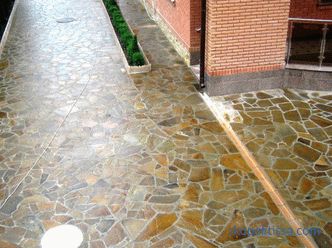
Sometimes landscape designers offer the option of growing grass between laid stone tiles. It is rarely done because such a garden path does not have the required strength. Usually, they do not lay a pillow with all the materials used to form it. Sandstone is laid just on the ground. At the same time try not to use limestone. They take thick stones with a flat or convex plane, which are mounted with a gap within 5 cm. The ground is filled up between the stone elements.
If a track made of pure concrete is used in a country plot and it has lost its appearance and durability during long-term operation, you should not dismantle it. Concrete is an excellent solid foundation. Concrete path just fall asleep sandy screenings, which laid the sandstone tiles. In order that facing is well grabbed with sand, the finished lane is plentifully watered.
The video shows how a concrete garden path is covered with sandstone flagstone:
It might be interesting! In article on the following link read about birdhouse in the Canadian forest .
Conclusion on the topic
So, we talked about sandstone paths (their construction technology, types of stone). It should be noted that the owners of suburban areas are attracted in sandstone not only by their presentable appearance, operational characteristics, but also by price. Indeed, among the stone facing this is the cheapest.
